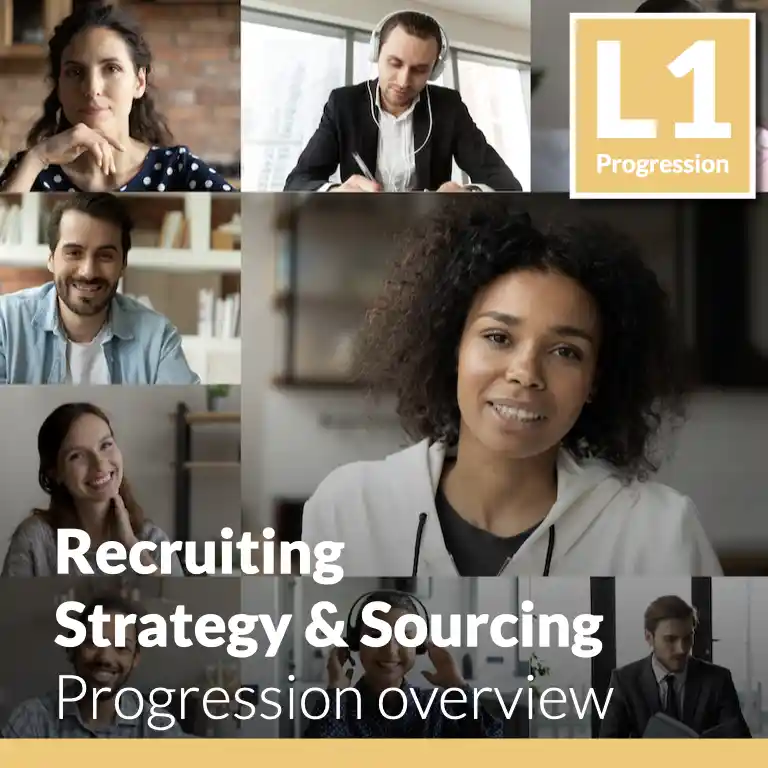Enjoy instant access to a scalable system of proven practices and execution-ready tools. Built to launch strategic HR programs 5X faster!
✓ Enjoy platform access
✓ Create your HR roadmap
✓ View open content in library
✓ Access dozens of practices:
⤷ The HR Strategy program
⤷ Explainers and deep dives
⤷ Supplemental guides
⤷ Insight articles
⤷ Weekly best practices
⤷ And more!
100% Free. No credit card required.
This guide is part of a progression set comprised of Core, Advanced, and Emerging Recruiting Strategy & Sourcing practices.
Recruiting practices used to fill job positions effectively and efficiently have evolved significantly over the last decade, with several approaches being adopted. “Talent Acquisition,” for example, is a term used to illustrate a more targeted approach that focuses on attracting key talent and how it should be linked with the flow of the talent management cycle. Another is “Workforce Access,” which casts a wider net and enables organizations to more intentionally take advantage of technologies and the entire workforce ecosystem, including temporary workers, the gig economy, and even the crowd. All these concepts and practices come together and are still referred to as “Recruiting.”
Full Recruiting Cycle
Recruiting Strategy & Sourcing covers the practices that correspond to setting up the strategy, preparing job profiles and recruiting campaigns, and sourcing and attracting adequate prospects who might be interested in the specific job and what the company has to offer. When considering the entire recruiting cycle, subsequent stages addressed separately include conducting candidate screening and selection activities, together with producing offers for the desired candidate(s) and closing the loop with both the finalist(s) accepting the hiring offer and those who might have been rejected along the process.
The recruiting strategy aligns with and supports the business strategy. It further defines the employee value proposition (EVP) or “employer brand” to clarify what the company offers in terms that extend beyond the position itself to longer-term career opportunities, company culture, etc. It considers the relative strategic value of each role through a critical workforce analysis. It creates a process for individual jobs to gain hiring approval before initiating recruitment activities. It outlines plans for the number of candidates needed to engage within a set time horizon, the specific capabilities required, and the approaches for attracting them. Sourcing includes the places and groups, physical or virtual, where prospective talent can be found and engaged. A good recruiting strategy includes sourcing both internal and external resources.
People are the most critical enablers for any organization. Finding and attracting the right talent is difficult, especially in highly specialized or competitive industries. Often, companies compete for talent across sectors and geographies, given a shorter talent supply and increased job opportunities further facilitated by hybrid work arrangements. Creating a solid recruitment strategy is an essential and structured way to help ensure sufficient employees are available to conduct the primary tasks associated with a company’s products, services, and support functions.
A clear and sound recruitment strategy, flexibility, and multiple sourcing channels are key to efficiently accessing the right people and capabilities needed for business traction, operational continuity, and competitiveness. It enables comprehensive communication and reach into labor markets related to a company’s position requirements and availability. The goal is to inform an optimized number of qualified candidates about the career and growth opportunities offered, thereby enhancing the chances of attracting the best talent.
Adopting these recruitment practices leads to creating a comprehensive and detailed plan that aligns recruitment needs with business plans and requirements. It clarifies the volume and types of positions that will need to be acquired, along with a clear picture of the relative strategic value of each. This plan is ideally based on a clearly stated EVP, which can be leveraged to communicate the value of accepting a job offer and remaining employed for a more extended period of time than with other competitor employers. The outcome is a set of job profiles that create clarity for both the hiring requirements and job duties and responsibilities entailed in the position, thereby streamlining the recruitment process.
These practices yield a multi-pronged sourcing strategy designed to increase the volume and variety of candidates for open positions, with an eye towards a comprehensive labor market sweep that engages candidates who “frequent” different sources of career opportunities. They also create an objective and measurable assessment strategy that evaluates each source of candidates for relative cost, candidate generation efficiency and effectiveness, and ultimately (and, most critically), quality of hire. Adopting these practices results in executing a well-honed process that proactively attracts appropriately skilled and experienced candidates to the company, compelling them to formally apply for the open job(s) for which they are best suited and most qualified.
Establishing a periodic process to maintain a recruitment plan in line with immediate and future business needs.
Effective job profiles ensure key requirements are appropriately communicated for preliminary alignment of applicants as well as selling the company and position to prospective candidates.
A comprehensive approach to sourcing provides the company access to highly diverse sources of talent.
Launching effective recruiting campaigns to target and attract highly aligned candidates for job positions in collaboration with the business.

Enjoy instant access to a scalable system of proven practices and execution-ready tools. Built to launch strategic HR programs 5X faster!